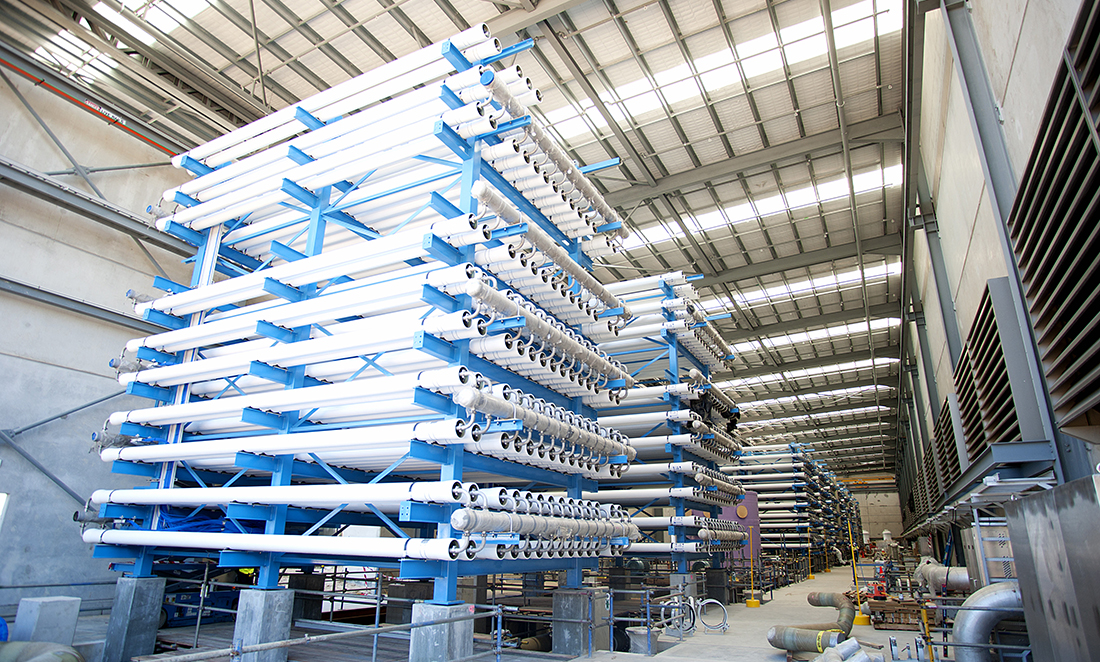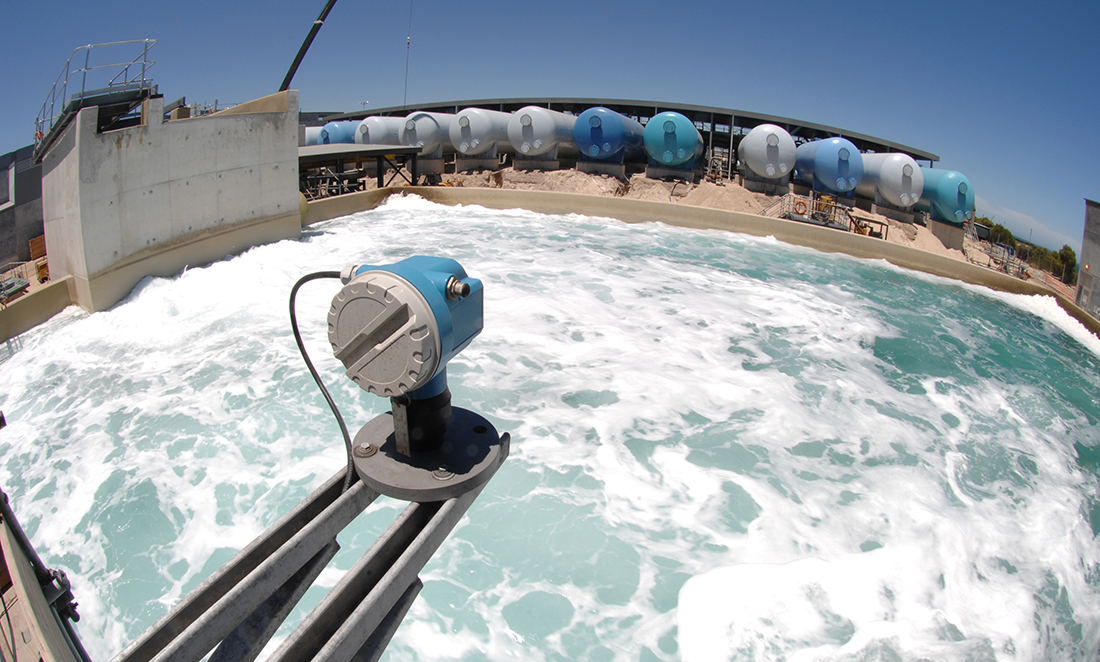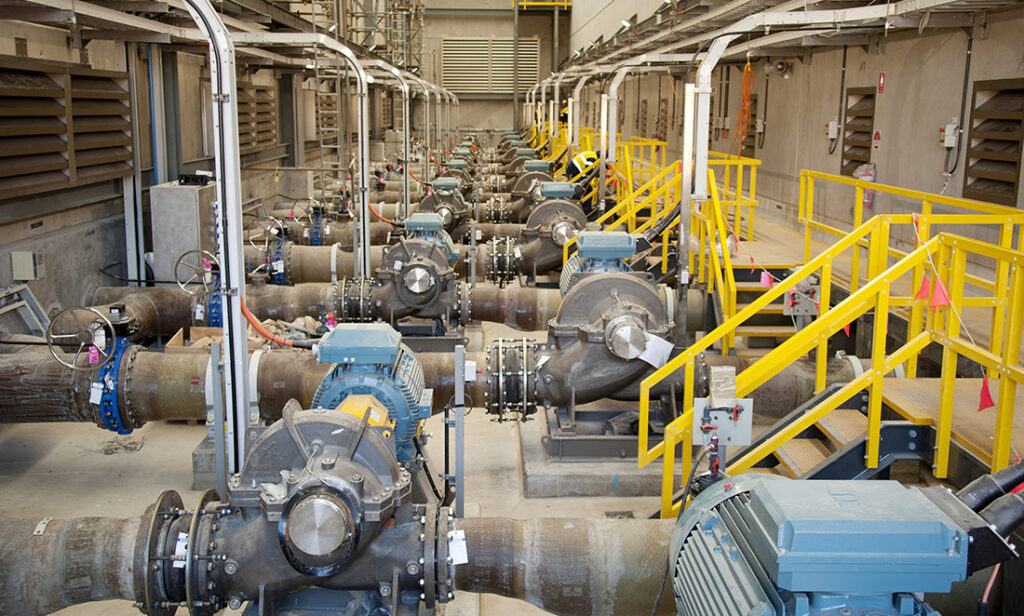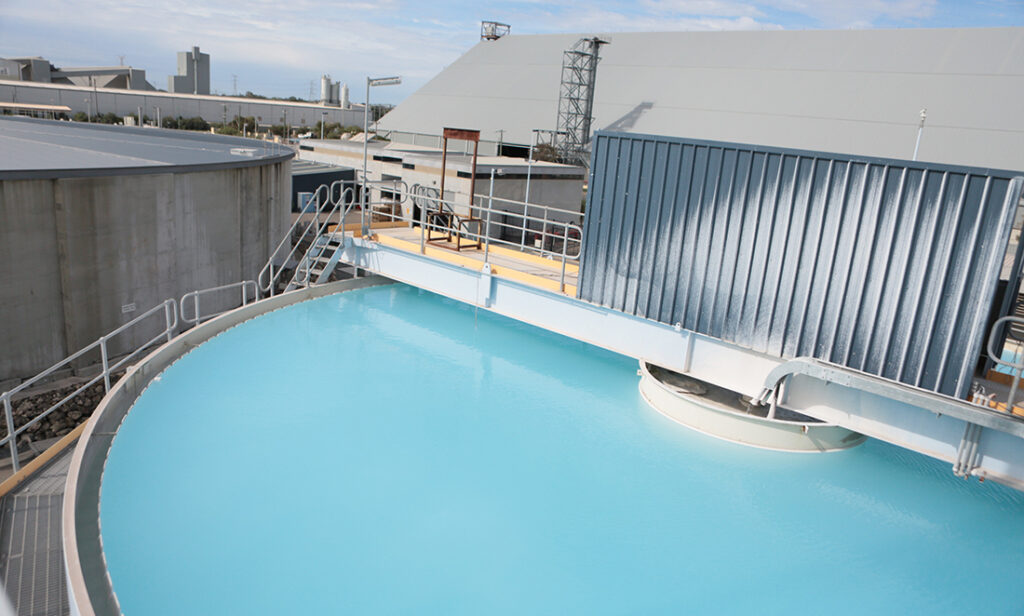But don’t worry. This article isn’t all doom and gloom. This is about an adaptive policy that was put in place over a decade ago and has worked so well that you’ve probably not heard a lot about it.
We’re talking about securing Perth’s water supply through desalination.
“Perth is a great example for how things should be done and also a great example of how things had to be done due to climactic changes,” says Wendell Ela, Professor of Desalination and Water Treatment at Murdoch University.
What is desalination?
Desalination is the process of removing salt and other impurities from water so it can be safely consumed for drinking. Almost 50% of Perth’s water supply comes from two desalination plants in Kwinana and Binningup.
While the process might sound high-tech, desalination is actually pretty close to how the water cycle works naturally. That’s where seawater evaporates into clouds, which rain on the land and flow into lakes and rivers. Both processes are taking water from the ocean and removing salt. It’s just that desalination helps out in places that don’t have enough rain.

So why did Perth need it?
Have you ever noticed that Perth is … kinda dry? And it’s only getting drier.
Before Perth embraced desalination technology, we got most of our water from dams in the hills, which filled from surface water run-off after rain.
“That could not continue,” says Wendell. “Perth has grown phenomenally in the last few decades, and demand for water has also gone up.”
“Additionally, the amount of surface water available is about 25% of what it was in the 1900s.”
Yup. The changing climate has meant Perth gets a quarter of the rainfall it used to.
“We were also using groundwater at an unsustainable rate and depleting aquifers.”
Running down aquifers doesn’t only reduce the water supply. It can dramatically alter the ground chemistry, which leads to unintended changes in the ecology. In the Perth suburb of Stirling, a reduction in groundwater (and a few other factors) led to chemical reactions that made the remaining groundwater as acidic as vinegar.
Make a plan
But just because it’s worked out in Perth doesn’t mean desalination has had an easy ride elsewhere. While Perth’s desalination plants were well planned, Melbourne’s was “born of devastating drought, imposed without notice by a panicked government, inflated in cost by the global financial crisis, hobbled by poor industrial relations, shrouded in government secrecy, and hostage, finally, to the weather, the “desal” saga is almost Shakespearean in its scope,” according to The Age in 2011.
Wendell believes that proper planning is key for desalination to work elsewhere but also stresses that it cannot be the only solution for a city experiencing water problems.
“Desalination is not a silver bullet solution, and it can be done poorly. But it can be planned well as part of a suite of solutions to maintain a reliable water supply.”
Indeed, in Perth, we not only use desalination but also groundwater replenishment, dams and recycled water. Crucially, work goes in to running education campaigns that teach the public about the importance of not wasting water.
Problems to solve
So what are the downsides of desalination? First up, the process can be very energy intensive, but since production in the Binningup facility commenced in 2011, the plant has purchased renewable energy to offset the energy used in desalination.
There is also a concern about what you do with the salt you take out of the water. It’s got to go somewhere, and that’s usually back into the ocean. But Wendell says this is just another part of the process that can be managed.
“There can be local issues with dumping that salt water back into the ocean. The extra salinity can have a very adverse effect on the animal and plant life viability of the area,” he says.
“But we have ways of dispersing that salt water, as well as pre-mixing it before putting it back in the ocean, as it is discharged. These techniques completely avoid the problem of increasing salinity.”
So, has desalination worked? Well, since the desalination plants have been turned on, they’ve provided about 475 billion litres of fresh drinking water – enough to fill Sydney Harbour.
That should be enough to satisfy even the saltiest critics.











